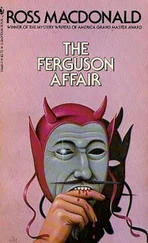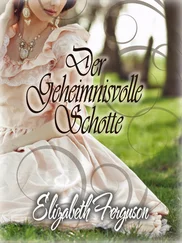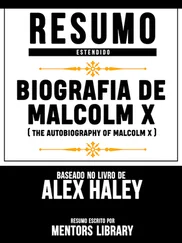Ferguson, Alex - Alex Ferguson My Autobiography
Здесь есть возможность читать онлайн «Ferguson, Alex - Alex Ferguson My Autobiography» весь текст электронной книги совершенно бесплатно (целиком полную версию без сокращений). В некоторых случаях можно слушать аудио, скачать через торрент в формате fb2 и присутствует краткое содержание. Год выпуска: 2013, Издательство: Hodder & Stoughton, Жанр: Старинная литература, на английском языке. Описание произведения, (предисловие) а так же отзывы посетителей доступны на портале библиотеки ЛибКат.
- Название:Alex Ferguson My Autobiography
- Автор:
- Издательство:Hodder & Stoughton
- Жанр:
- Год:2013
- ISBN:нет данных
- Рейтинг книги:3.67 / 5. Голосов: 3
-
Избранное:Добавить в избранное
- Отзывы:
-
Ваша оценка:
- 80
- 1
- 2
- 3
- 4
- 5
Alex Ferguson My Autobiography: краткое содержание, описание и аннотация
Предлагаем к чтению аннотацию, описание, краткое содержание или предисловие (зависит от того, что написал сам автор книги «Alex Ferguson My Autobiography»). Если вы не нашли необходимую информацию о книге — напишите в комментариях, мы постараемся отыскать её.
Alex Ferguson My Autobiography — читать онлайн бесплатно полную книгу (весь текст) целиком
Ниже представлен текст книги, разбитый по страницам. Система сохранения места последней прочитанной страницы, позволяет с удобством читать онлайн бесплатно книгу «Alex Ferguson My Autobiography», без необходимости каждый раз заново искать на чём Вы остановились. Поставьте закладку, и сможете в любой момент перейти на страницу, на которой закончили чтение.
Интервал:
Закладка:
So the figure we inserted was £35 million, which, we thought, would deter all-comers, even Real Madrid. They agreed it. To David, I said, ‘If they come back next year and pay thirty-five million, at least we’ll know we have doubled our money on him. If they don’t come, we’ll get the two years in his contract out of him, and he will be twenty-nine by that point. We’ve had him four years. We’ll be able to move him on.’ Fine, but the moment Ruud signed that contract he changed. In his last season he became a really difficult boy. I don’t think he was popular by the end. The alteration in him was dramatic.
My brother Martin had seen him play for Heerenveen and said: ‘I really like this lad, he does look the part.’ With that glowing review I needed to get cracking. We went back to see him again but received word he had already signed for PSV a month previously. That confused me. But it seemed a done deal. We kept an eye on him regardless and made our move in 2000.
On a short holiday in Spain, during an international break, I received bad news: a message from our doctor to say Ruud had failed the medical. We were sure we had spotted cruciate ligament damage. PSV disagreed, insisting that all their tests had shown only minor ligament disruption of the kind that would not prevent him passing the examination. Mike Stone, however, would not sign it off. So we sent him back to PSV, who sent him back into training and filmed it, for our benefit. In the practice session Ruud’s knee completely went. The footage found its way onto TV, where you could see him screaming. What should we do?
‘These days, if you have the right people looking after you, you can be back from this kind of injury in a few months,’ I told Martin Edwards.
Van Nistelrooy followed the trusted route to Dr Richard Steadman in Colorado and was out for almost a year. He returned towards the tail end of that season and we signed him in 2001, after I had been to watch him against Ajax. His mobility was not impaired and his pace had not diminished. He wasn’t the quickest striker; he was a galloper who had a quick brain in the penalty box.
I’d also been to see him at his home while he was convalescing and had told him we would still be taking him to Old Trafford, irrespective of his injury. That was an important message for him, because I don’t think he was the most confident lad at that point in his career. He was a country boy.
He was a typical old-fashioned Italian-type centre-forward. Forget all that running out to the wings and tackling. Back in the early 1960s, Juventus had a centre-forward called Pietro Anastasi, who would contribute little in games before winning them with sudden goal-scoring bursts.
That was the kind of centre-forward who dominated the game in that era. You left them to do their work in the penalty box. Van Nistelrooy was from that template. Opportunities had to be created for him. But he was a flawless finisher who scored some true poacher’s goals.
In fact, he was one of the most selfish finishers I ever saw. His personal goal tally was his guiding obsession. That single-mindedness gave him the edge of a great assassin. He had no interest in build-up play or how many yards he had run in a game, how many sprints he had made. The only aspect he was ever interested in was: how many goals did Ruud van Nistelrooy score. He was superb at the ‘early hit’. He would dart to the side of the defender and deliver that quick, lethal strike.
If you put my great goal-scorers together (Andy Cole, Eric Cantona, Van Nistelrooy, Rooney), Ruud was the most prolific. But the best natural finisher was Solskjaer. Van Nistelrooy scored some magnificent goals, but many were scabby, six-yard box goals. Andy Cole scored some fine goals, too, but plenty were close in, scrambled, off the leg, just-get-it-in goals. Solskjaer’s finishing, though, could be majestic. His thought processes underpinned his skills. He had that analytical mind. As soon as he arrived in a shooting position, he had it all sized up. He had mental pictures everywhere. Yet he didn’t play all the time because he wasn’t the most aggressive of strikers. He developed more of that later, but was a slender young man without the physique, in his early days, to clear a path.
In games, sitting on the bench, and in training sessions, he would make notes, always. So by the time he came on he had analysed who the opponents were, what positions they were assuming. He had those images all worked out. The game was laid out for him like a diagram and he knew where to go and when.
Ole was a sweet-natured boy who was never looking to be confrontational with me. There was no risk to my office door from Ole wanting to smash it down to demand a place in the first XI. We knew he was content with his role, and that helped us, because if we had a difficult decision to make about the other three strikers, which one to leave out, the fourth was content to play a supporting part. So we just had the three grumpy forwards to deal with. Yorke, Cole and Sheringham.
At first I believed Ruud’s range of attributes was wider than it turned out to be. I expected to see from him more of the donkey-work that Manchester United players have to do. There were times when he did his share, and would apply himself to it, but he was not inclined to be that kind of industrious player. He wasn’t endowed with great stamina. His test results were never startling. Yet you knew he could always put the ball in the net if you fed it into his path.
In the preceding years we had lost Cantona, Teddy Sheringham had gone, Ole was having his knee problems, Yorkie had lost a bit of focus and Andy was still fit, fresh. You could always rely on Andy, but I knew when I took Van Nistelrooy on, I was bound to have problems with Cole, because he thought he was the best centre-forward in the world. I say this affectionately, because it was a useful self-image to have, but he was miffed when I started pairing him with Ruud.
Displeasure had been apparent too in Andy’s relationship with Cantona. The only colleague he really related to was Yorkie. Their season in 1998–99 was made in heaven. Their partnership, their friendship, was phenomenal. They hadn’t known one another when Yorkie came to the club, but they just gelled. In training they would work on runs together, little dummies, one-twos. They synchronised beautifully. I think they scored 53 goals between them.
Pairing up with Van Nistelrooy wasn’t going to work for Andy, so I sold him to Blackburn Rovers. He was in his early thirties by that point and we felt we’d had some fine years out of him. We signed him in 1995, got seven years out of him and received £6.5 million from Blackburn. His cost from Newcastle had been £7 million, plus Keith Gillespie, who was worth no more than £1 million. So we almost recovered our money after seven years of productivity. Not bad.
Another striker who ran up against the problem of Ruud’s singularity was Forlán, a grand player. Ruud wanted to be the No. 1 finisher. That was his nature. Diego Forlán didn’t register on his radar at all, so when you put the two of them out there together there was zero chemistry. Diego was better with a partner. But he scored some priceless goals. Two at Anfield, a goal with the last kick of the game against Chelsea. He was a good player and a terrific pro.
The other complication I had with him was that his sister was an invalid, in Majorca, and it fell to him to look after her. But he was great about the place, always smiling. Spoke five languages. A breath of fresh air, as a person. We let him go for £2 million, which I thought was too cheap. With his wages, no club was willing to bid any higher. The next thing we knew he was moving on for £15 million. He floated over the ground. He was small but had a good upper body. Tough. He was such a good tennis player that he might have become a pro and had to choose between that and football. I knew that, when he joined. During our pre-season tennis tournament, I tried to get a bet on him. I said to Gary Neville, who ran the book: ‘What price is Diego?’
Читать дальшеИнтервал:
Закладка:
Похожие книги на «Alex Ferguson My Autobiography»
Представляем Вашему вниманию похожие книги на «Alex Ferguson My Autobiography» списком для выбора. Мы отобрали схожую по названию и смыслу литературу в надежде предоставить читателям больше вариантов отыскать новые, интересные, ещё непрочитанные произведения.
Обсуждение, отзывы о книге «Alex Ferguson My Autobiography» и просто собственные мнения читателей. Оставьте ваши комментарии, напишите, что Вы думаете о произведении, его смысле или главных героях. Укажите что конкретно понравилось, а что нет, и почему Вы так считаете.











